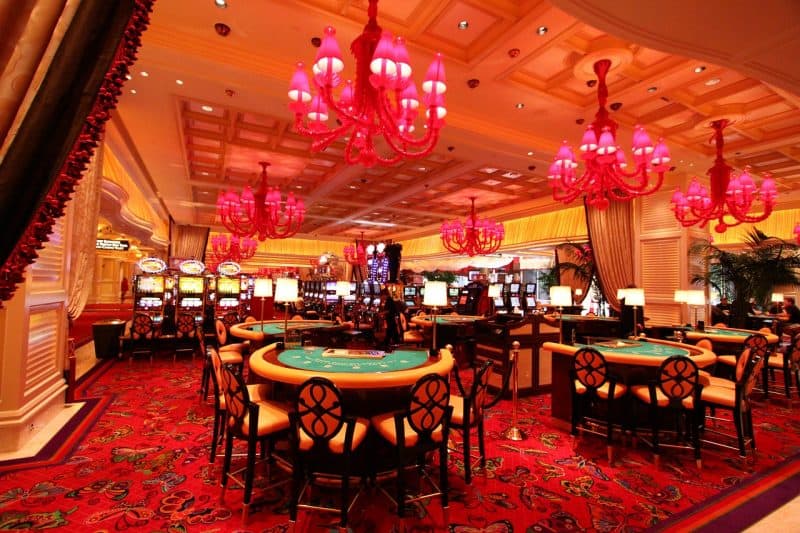The saga of gaming machines is a captivating narrative that mirrors the progress of amusement and gambling throughout the ages. Starting from their simple beginnings in the late 19th century to growing into a mainstay in casinos throughout the planet, these chance games have experienced significant changes. Casino slots games have enthralled players with their colorful designs, immersive themes, and the potential of transformative jackpots.
At first created as physical machines with rotating reels and a small number of images, slot machines have grown into cutting-edge tech-based games that incorporate innovative features and dynamic components. Today, they draw in millions of players, each wanting to strike it lucky with just the lever pull of a handle or the tap of a tap. Investigating the fascinating past of these machines reveals not just the tale of a well-liked pastime, but also a mirror of social evolution and progress in technology over the ages.
The Beginnings in Slot Machines
The story of slot machines begins in the final years of the 19th century, a time when machines were becoming popular in places of amusement. The first true slot machine was invented by Charles Fey in 1895, known as the Liberty Bell. It featured three spinning reels and 5 symbols: hearts, diamonds, spades, a horseshoe, and the legendary Liberty Bell. Players would pull a lever to spin the reels, and if the symbols matched in a particular combination, they would win a payout. Fey’s invention quickly captured the attention of gamblers and set the foundation for future developments in casino slots games.
As the idea of the slot machine gained popularity, numerous inventors looked to enhance Fey’s design. By the dawn of the 1900s, these machines were becoming a common sight in saloons and amusement parks. In 1907, the first electromechanical slot machine was created by Herbert Mills, which featured a more intricate system of payout mechanisms and the renowned fruit symbols that are still associated with slots today. This evolution marked a major shift in the gaming industry, as machines became more entertaining and user-friendly, drawing in more players.
The popularity of slot machines continued to soar throughout the first half of the 20th century, leading to their widespread adoption in casinos across the United States. However, as legal restrictions on gambling during the Great Depression presented challenges for the industry. Many machines were outlawed, but this did not stop innovators. Instead, they adapted by creating machines that dispensed candy or gum instead of cash prizes, effectively bypassing the restrictions while still offering the thrill of a casino slots game. This creativity kept the spirit of gambling alive, setting the stage for the future resurgence of slot machines in modern casinos.
Development of Slot Machine Innovation
The history of gambling machines began in the final 19th hundred years with the debut of the early mechanical slot machines. Charles Fey, a San Francisco mechanic, introduced the first slot machine in 1895, which boasted three spinning reels and five images: heart shapes, diamond shapes, spades, a lucky horseshoe, and the bell symbol itself. This simple yet enthralling layout laid the basis for the evolution of slot games, creating an swift attraction for gamblers seeking entertainment and a opportunity to win.
As technology advanced, so did the design and operations of slot machines. By the middle 20th era, electromechanical machines surfaced, incorporating electronic elements to improve gameplay and amplify payout possibilities. These improvements enabled for greater complexity features like multiple paylines and bigger jackpots. The casinos embraced these developments, causing the growth of casino slots as a major provider of profits within the gaming industry, fundamentally altering the casino slots game experience.
The closing 20th and initial 21st centuries introduced the age of digital technology, resulting in the introduction of digital slots. https://five88.webcam/ These devices replaced traditional reels with screens, enabling even more imagination in themes and gameplay systems. Players could now enjoy engaging graphics and sound effects, along with interactive bonus rounds. The shift to web-based gaming further transformed the slots experience, rendering slots reachable to a global market whenever and everywhere, thus marking a new phase in the progression of gaming machine innovation.
A Cultural Influence of Gaming Machines
Slot machines have become more than just a form of entertainment; they have integrated into the essence of popular culture. From movies and television shows to music and literature, these famous gaming machines often serve as emblems of luck and risk. Films like The Casino and Ocean’s Eleven prominently feature slots, portraying them as thrilling yet uncertain elements of the gambling experience. Their distinct attraction lies in the noise of coins falling, the spinning reels, and the vibrant flashing lights, which together create an electric atmosphere that captures attention.
In addition, slot machines have influenced social gatherings and events, making them a focal point in casinos and gaming venues. Many people do not just visit a casino to gamble; they go for the entire experience, which includes the social interactions and the vibrant ambiance surrounding these machines. Special contests and themed gaming nights centered around slots also highlight their popularity, fostering social connections and collective fun among players. This social element has contributed to the machines’ enduring popularity.
The advancement of technology has also changed this cultural impact. Digital and online slots have expanded access to these games well beyond the walls of physical casinos. Players can now enjoy their favorite casino slot games from home or on the go, leading to the rise of online communities and forums where enthusiasts exchange strategies and experiences. The ongoing innovation in game design and the integration of storytelling have kept the cultural importance of slot machines alive, attracting younger audiences while maintaining a connection to their cultural roots.
